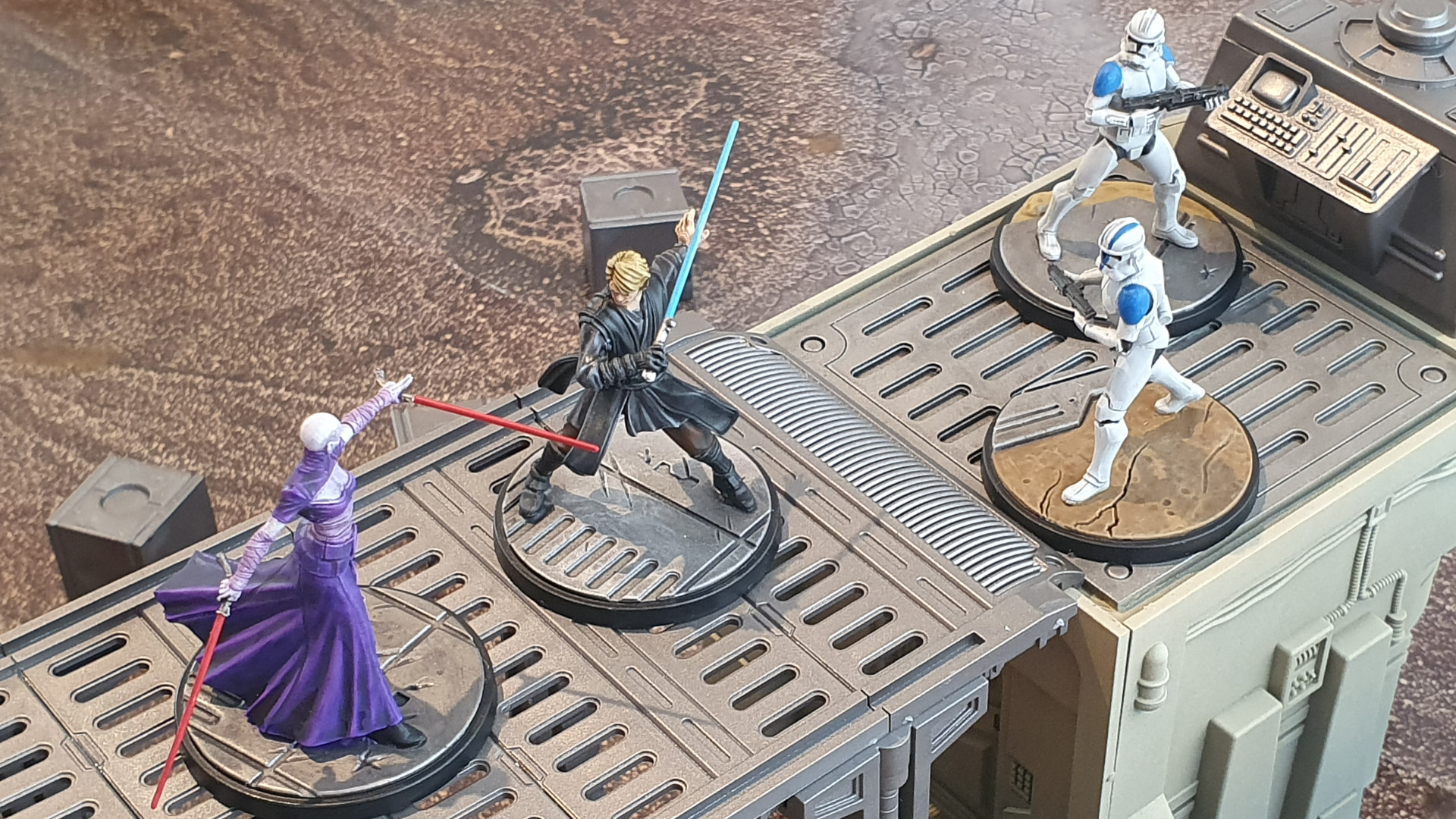
It would perhaps be easy to overlook Star Wars: Shatterpoint. There’s not exactly a shortage of skirmish games at the moment and this is far from the first miniatures-based title set in the galaxy far, far away - Atomic Mass Games themselves already own the excellent Star Wars: Legion.
That game, good though it is, doesn't quite capture the dynamic nature of combat seen in the movies and TV shows. By contrast, Star Wars: Shatterpoint neatly evokes the fast and fluid fights of the prequel trilogy and the Clone Wars animated series. And while it undoubtedly has similarities to Marvel: Crisis Protocol (another big-hitter from Atomic Mass), there's enough flavor here to make Shatterpoint feel genuinely unique and worthwhile.
Star Wars: Shatterpoint - features
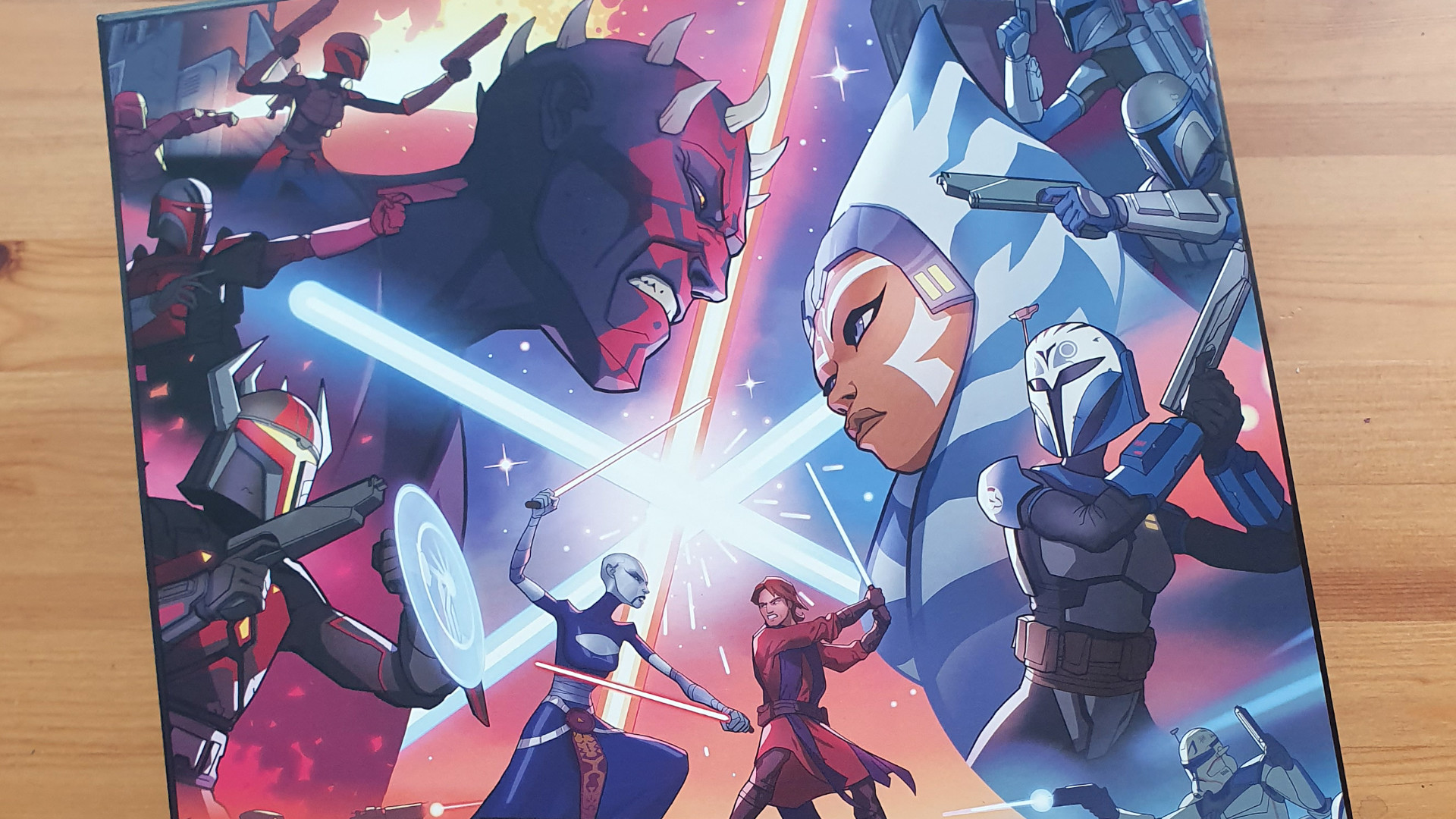
Star Wars: Shatterpoint is a skirmish wargame, meaning that there are fewer troops on the battlefield and heroes play a much more significant role. This is a direct contrast to Star Wars: Legion, where larger armies led by a hero or villain duke it out. If you're familiar with Warhammer, think of it like Kill Team vs 40K.
While the Shatterpoint starter set I'm reviewing here is a little pricey (hovering around the $164.99 mark in the US or £150 in the UK), it comes generously crammed with stuff. You get enough miniatures for two strike teams, one representing the forces of the Republic, and one representing the Separatists. Altogether, there's 16 bases' worth of miniature. I say 'bases' because while most models have a stand to themselves, the six Battle Droids play as two groups of three.
What you don't get is assembly instructions for any of the models - you have to download them
The minis are, generally, excellent. At 40mm they stand a little taller than Legion figures - putting my Anakin Skywalker side-by-side with the Legion version of his son, Luke, shows a good CM in height difference. The models seem leaner, too. Detail is crisp and clear, though some bits are so thin they seem almost guaranteed to break - you're going to want to pack anyone with a lightsaber super-carefully. I've painted a few of them up to battle ready standard (see the pics - not my best work, but I'll return to them at a later date) and they have a really nice balance of detail, without being cluttered. If you use Contrast or Speed Paint then you can have them up to a decent standard very quickly.
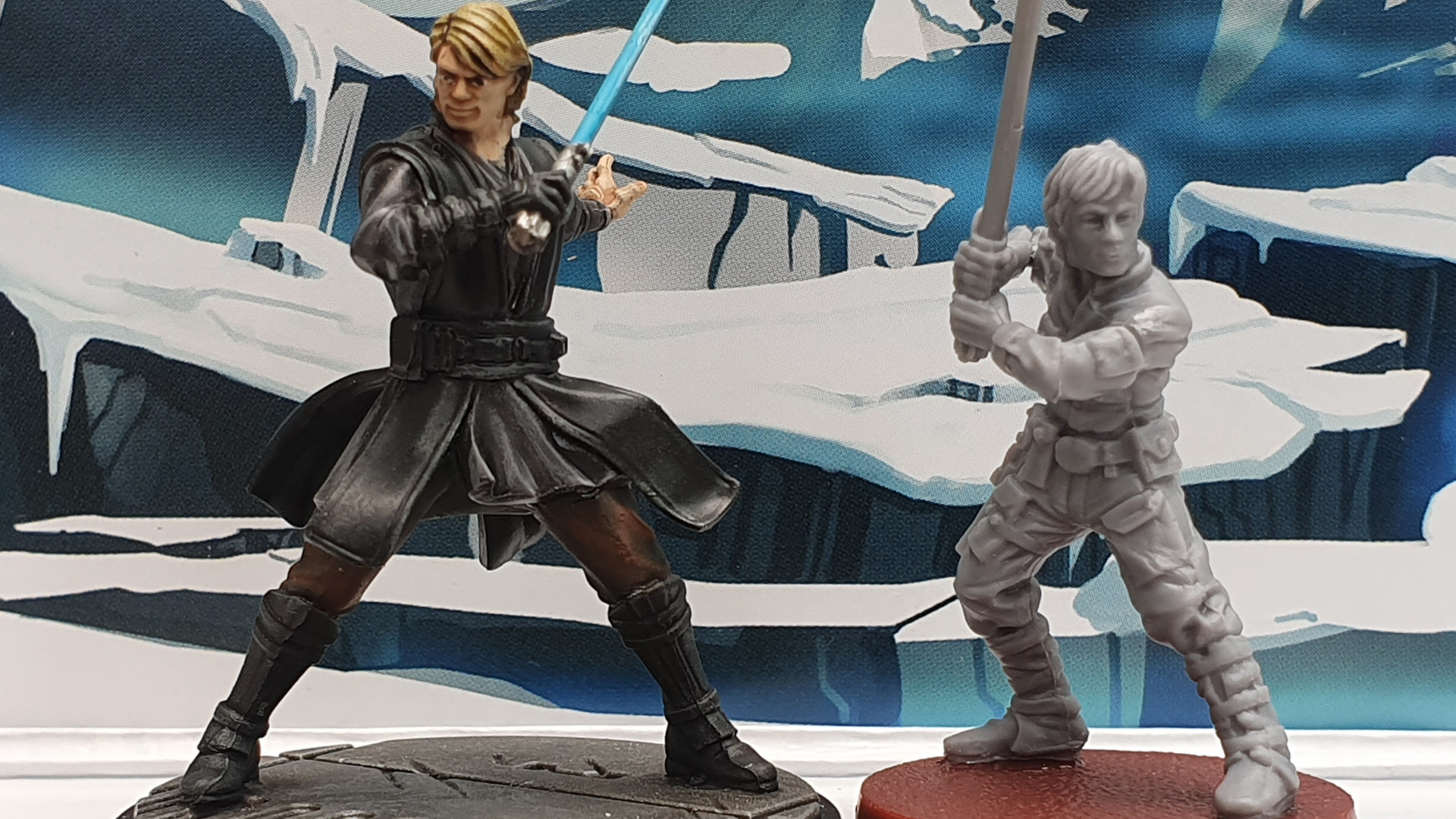
You also get 23 pieces of terrain, broken down into several larger buildings, lots of walkways, and a whole bunch of crates. The game makes a lot of use of height and cover, so including a decent amount in the starter box is essential. That said, if you want to really explore the game’s possibilities then you will quickly need to buy more expansion packs.
The box also includes a 40-page rulebook, all the cards you need, various measuring tools, and Shatterpoint's bespoke Attack and Defence dice. What you don't get is assembly instructions for any of the models - you have to download them from the Atomic Mass Games' website which is a small omission, but a slightly annoying one - I always like to have an assembly booklet that I can leaf through and annotate while working through a large building project.
Star Wars: Shatterpoint - how it works
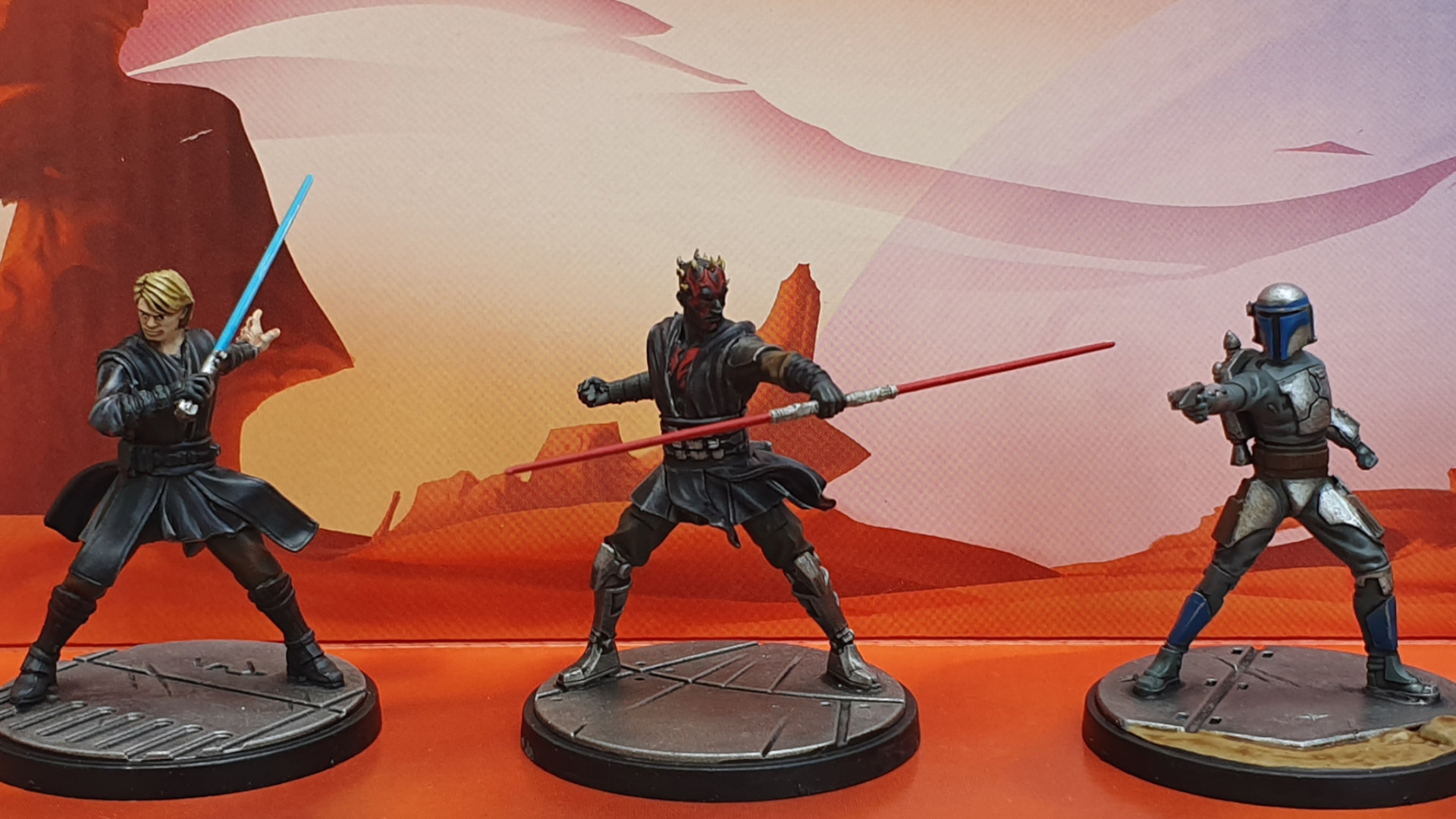
- You gain points by taking objectives or wounding foes
- Teams are made up of two heroes and a support unit
- Setup is fast, getting you into the action quickly
Games of Shatterpoint take place on a 36" x 36" surface and are quick and easy to get going - you can easily play a game in an evening, even if they tend to sprawl slightly more than, say, a Warcry or Kill Team session.
The aim of the game is for a player to win two Struggles. The easiest way to do this is to take hold of Objectives, but they can also be won by collecting Momentum tokens, which are gained by actions such as wounding enemies.
List building is equally straightforward. Strike Teams are made up of squads. Each squad starts with a Primary Unit, which will be one of your big name characters like Anakin Skywalker, Lord Maul, Ahsoka Tano, Asajj Ventress, and so on. That character is then backed up with a Secondary Unit (Bo-Katan, Rex, etc) and finally a Supporting Unit (in the box that's Clone Troopers or Battle Droids).
It's a smart and intuitive system that really feels like the action is dynamic and fast-moving
You're not permitted to mix and match characters from different eras, though - so no putting Original Trilogy heroes with Clone Wars troops, for instance - and you're forbidden from doubling up on models with the same Unique Name.
When all that's done, you select a Mission, place Objective Tokens, assemble your Strike Team, set up the table, and off you go.
Star Wars: Shatterpoint - gameplay
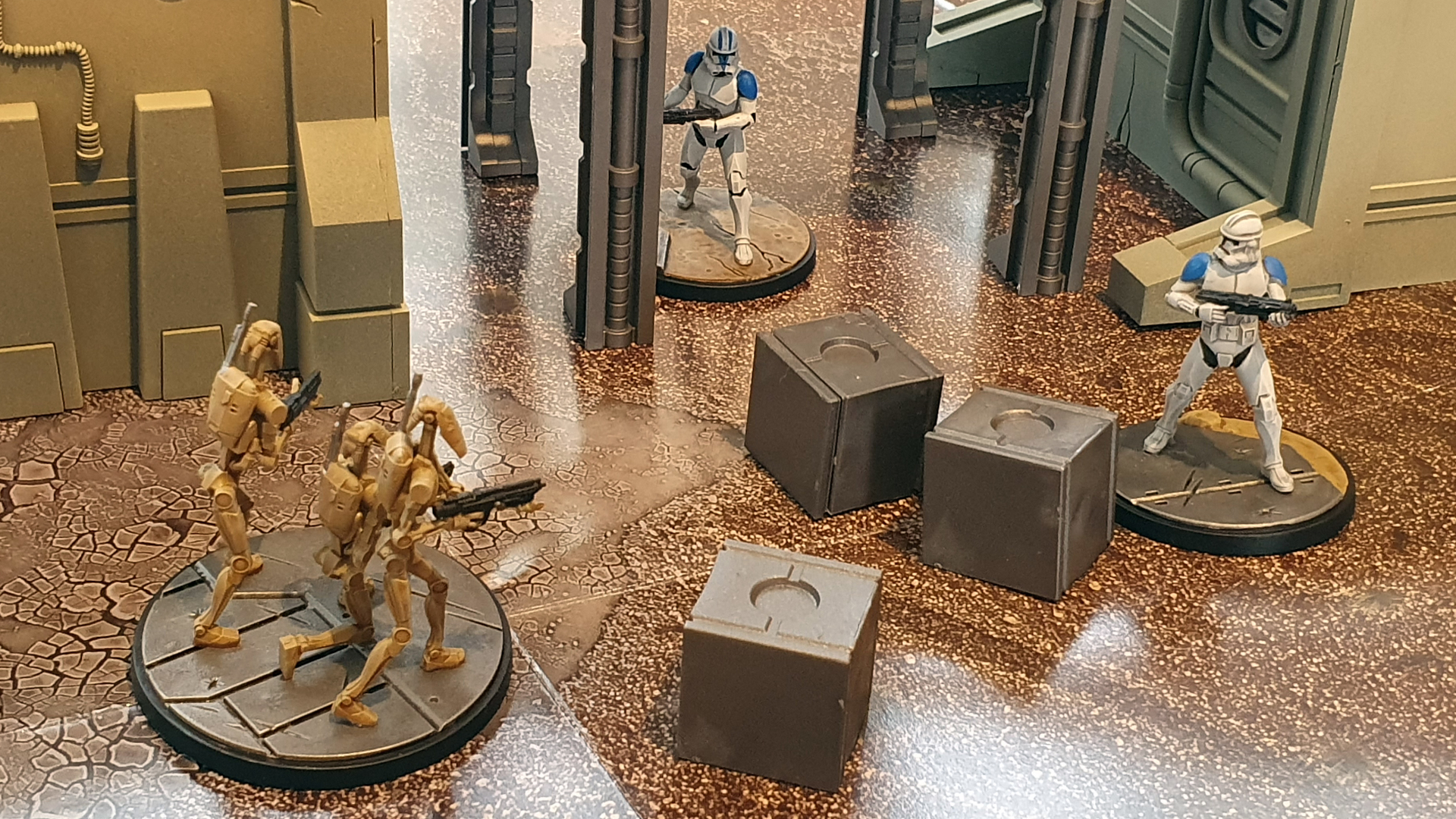
- Attacks can result in a wide range of effects, not just 'wound' or 'kill'
- Activation is randomized, which some won't like
- Height and cover have a huge impact on gameplay
Of course, the biggest factor in determining if a skirmish game is any good is in how it handles combat. Happily, Shatterpoint's system is an absolute doozy.
Attacks are handled using a familiar system of dice and the data on each character's Stance Card. Let's say Anakin Skywalker wants to fight Darth - sorry, Lord - Maul in close combat. After engaging with his opponent, Anakin's player would roll a pool of Attack Dice determined by if the character is Active or Inactive. In this example the active Anakin would roll eight Attack Dice, while the active Maul would roll six Defense. Modifiers, such as special character skills, are applied to both attack and defense and the winner is determined.
While players take it in turns to control a character, precisely which character that is is effectively randomized
Let's now say that Anakin's attack has been successful. Rather than simply killing or wounding his opponent, the result could lead to a host of other effects as determined by the character’s Combat Tree (basically a flow chart). Maul might block attacks, or Anakin could wound his opponent and then leap out of the way. It's a smart and intuitive system that really feels like the action is dynamic and fast-moving.
Another aspect I liked, though I gather it's controversial with some, is the way that Activations are handled. While players take it in turns to control a character, precisely which character that is is effectively randomized, using a shuffled deck of Unit Order cards. Ahsoka could be under fire from your opponent, but if, when it comes to your turn, you draw a different card - say, a Clone Trooper - there's little you can do about it. There are exceptions to this - Shatterpoint cards allow you to choose which model to activate, or you can use a Force Point to reserve a favored card - but it adds a real tension to the game, forcing you to decide on the fly whether to use other models to try and intervene or leave a character to their fate.
Should you buy Star Wars: Shatterpoint?
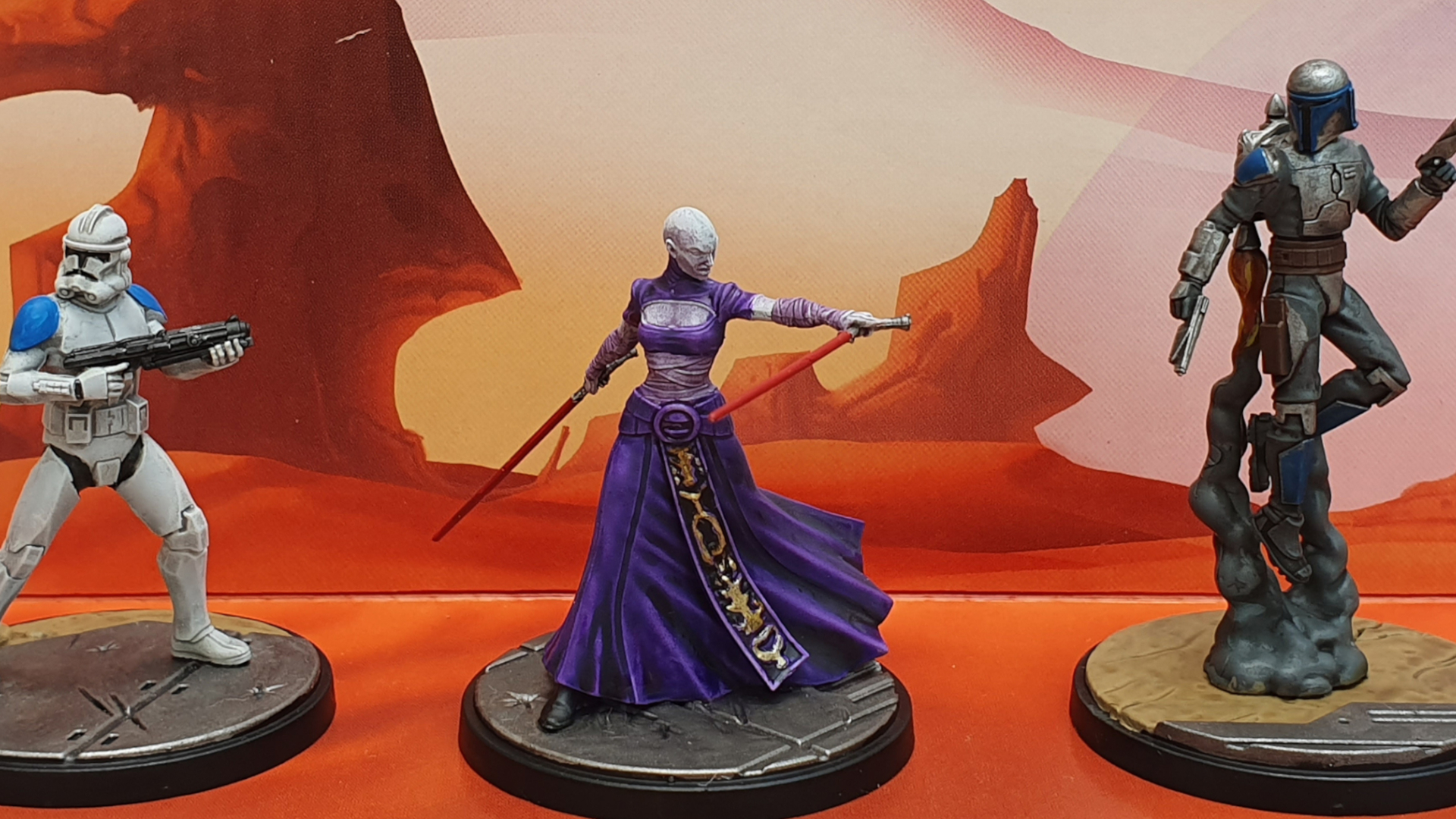
Shatterpoint is a lot of fun. To a certain extent, it is quite similar to Marvel: Crisis Protocol and which of those two titles you prefer will, in large part, be determined by how much affinity you have to each franchise. Of the current crop of skirmish games, I'm not quite ready to say I prefer it to Games Workshop's Warcry, which remains for me a very rich and involving system with a lot of room for progression, but that may come with time and further expansions.
Ultimately, the combat system is excellent and really keeps things moving and the models are lovely. If you're a Star Wars fan and a tabletop gamer, this really is made for you - it's arguably one of the best Star Wars board games around.
Buy it if...
Don't buy it if...
How we tested Star Wars: Shatterpoint
After putting together all of the game's miniatures and its terrain, I spent time painting them up to a battle-ready standard before hitting the tabletop for some games with a variety of characters. For more information on our process, check out our guide on how we test.
This review of Star Wars: Shatterpoint was made with a copy of the game provided by the publisher.
Want to see how the competition fares? Check out our Warhammer Underworlds: Gnarlwood review or our Godtear review.







